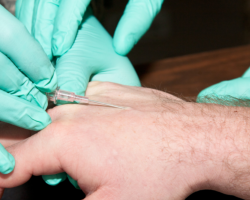Introduction
 Oxidative Therapy is simply treating the body with extra oxygen. Treatment methods include forcing extra oxygen gas (O2) into the lungs under pressure (hyperbaric oxygen), mixing blood with ozone gas (O3) and the intravenous infusion of liquid hydrogen peroxide (H2O2).
Oxidative Therapy is simply treating the body with extra oxygen. Treatment methods include forcing extra oxygen gas (O2) into the lungs under pressure (hyperbaric oxygen), mixing blood with ozone gas (O3) and the intravenous infusion of liquid hydrogen peroxide (H2O2).
Oxidative therapies are those that stimulate the body’s oxidative capacities, which are required for energy metabolism, detoxification and immune function, but result in multiple benefits including, but not limited to:
- Directly and indirectly destroy viruses, bacteria, fungi and cancer cells.
- Stimulate white blood cell (immune cells) production.
- Increase oxygen delivery from the blood to the tissues, remember healthy cells need oxygen and cancer cells are damaged by oxygen.
- Anti-angiogenic, which means that they inhibit the growth of new blood vessels that feed tumors.
- Oxidize and degrade petrochemicals and other toxic substances.
- Increase red blood cell membrane flexibility so that they can deliver oxygen even through very narrowed and diseased vessels.
- Stimulate the production of interferon, tumor necrosis factor, and other cytokines, which are needed to fight infections and cancers.
- Increase the efficiency of the anti-oxidant enzyme systems, which scavenges excess free radicals in the body.
- Stimulate the citric acid cycle, which is how the body produces energy from fuels in the presence of oxygen (aerobic metabolism) also called ‘oxidative metabolism’ or ‘cellular respiration’.
- Increase the oxygen content of the blood and tissues.
OXIDATION is an extremely important energy-producing chemical reaction in the body using various forms of oxygen. Like nuclear energy, this powerful oxidative energy must be tightly controlled to prevent damage to surrounding normal tissue. Antioxidants in the form of vitamins and enzymes protect the body from oxidative damage. The immune system, however, uses oxidative energy as a weapon to directly kill infectious agents such as bacteria, virus, yeast and parasites.
Common Oxidative Therapies
- Ozone Therapy: O3 or Oxygen Therapy is an effective therapeutic method that helps increase oxygenation, detoxification and immune stimulation.
- Hydrogen Peroxide Therapy: Intravenous therapy that increases production of interferon, increases oxygen content in tissue, and inhibits the growth of anaerobic organisms.
- Ultraviolet Blood Irradiation Therapy: Intravenous therapy of effectively and safely treating most blood-borne viruses and related conditions.
- Carbonyl Groups Therapy: Intravenous application of functional carbonyl groups serving as the initiators of oxidative energy production and free radical inhibitors.
- Airnergy (Active Air): Non-invasive oxygen therapy; also known as spirovital or respiratory therapy.
We know there can be no life if oxidation does not occur. Oxidation is the process through which the body converts sugar into energy. The body also uses oxidation as its first line of defense against bacteria, virus, yeast and parasites. Even breathing oxygen is an oxidative process. When we use the principles of oxidation to bring about improvements in the body, it is called a therapy herein referred to as Oxidative Therapy.
A number of substances are known to cause oxidation in the body, but the most important of these is hydrogen peroxide. Hydrogen peroxide, when exposed to blood or other body fluids containing the enzyme catalase, is chemically split into oxygen and water. A small amount of hydrogen peroxide can supply large amounts of oxygen to the tissue.